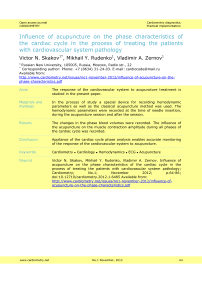Influence of acupuncture on the phase characteristics of the cardiac cycle in the process of treating the patients with cardiovascular system pathology
Автор: Skakov Victor, Rudenko Mikhail, Zernov Vladimir
Журнал: Cardiometry @cardiometry
Рубрика: Cardiometric diagnostics: practical implementation
Статья в выпуске: 1, 2012 года.
Бесплатный доступ
Aims The response of the cardiovascular system to acupuncture treatment is studied in the present paper. Materials and In the process of study a special device for recording hemodynamic methods parameters as well as the classical acupuncture method was used. The hemodynamic parameters were recorded at the time of needle insertion, during the acupuncture session and after the session. Results The changes in the phase blood volumes were recorded. The influence of the acupuncture on the muscle contraction amplitude during all phases of the cardiac cycle was recorded. Conclusion Appliance of the cardiac cycle phase analysis enables accurate monitoring of the response of the cardiovascular system to acupuncture.
Сardiometry, cardiology, hemodynamics, ecg, acupuncture
Короткий адрес: https://sciup.org/148308726
IDR: 148308726
Текст научной статьи Influence of acupuncture on the phase characteristics of the cardiac cycle in the process of treating the patients with cardiovascular system pathology
Aims The response of the cardiovascular system to acupuncture treatment is studied in the present paper. Materials and methods In the process of study a special device for recording hemodynamic parameters as well as the classical acupuncture method was used. The hemodynamic parameters were recorded at the time of needle insertion, during the acupuncture session and after the session. Results The changes in the phase blood volumes were recorded. The influence of the acupuncture on the muscle contraction amplitude during all phases of the cardiac cycle was recorded. Conclusion Appliance of the cardiac cycle phase analysis enables accurate monitoring of the response of the cardiovascular system to acupuncture. Keywords Сardiometry ≈ Cardiology ≈ Hemodynamics ≈ ECG ≈ Acupuncture Imprint Victor N. Skakov, Mikhail Y. Rudenko, Vladimir A. Zernov. Influence of acupuncture on the phase characteristics of the cardiac cycle in the process of treating the patients with cardiovascular system pathology; Cardiometry; No.1; November 2012; p.64-86; doi:10.12710/cardiometry.2012.1.6485 Available from:
Methods of western and eastern medical science are used by many practicing physicians in different countries. Comparing their treatment efficacy, preference should be given to the methods of eastern medical science, primarily to acupuncture. Acupuncture has been applied in practice for thousands of years already, while the methods of western medical science have been known for several centuries only. Besides, eastern medical science is based on the system approaches as opposed to western medical science.
The authors of the present paper have significant professional experience in acupuncture as well as in studying the cardiovascular system on the basis of the cardiac cycle phase analysis. Functional and other possible changes in the cardiovascular system caused by acupuncture procedure are recorded by the authors.
Materials and methods
Three patients of different age and gender, having different diseases were studied. One of the patients was examined during two acupuncture sessions. The other two patients underwent one acupuncture session. The acupuncturist defined the acupuncture points. The aim of the study was recording of the cardiovascular system response to the acupuncture procedure. It was important to identify the sensitivity of the diagnostic method to the influence of the acupuncture needle. With every patient the ECG and RHEO of the ascending aorta as well as 7 phase volumes in every cardiac cycle were recorded.
Results
Fig.1 – Fig.17 give the results of the study.
Patient 1. Elderly female
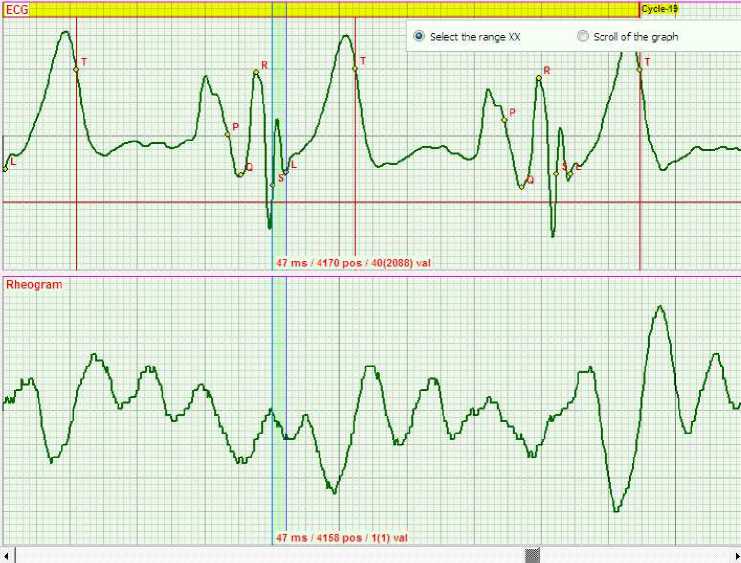
Figure 1a . 10:02:12. ECG and RHEO curves at the time preceding the acupuncture needle insertion. AP=127/74 (mmHg).
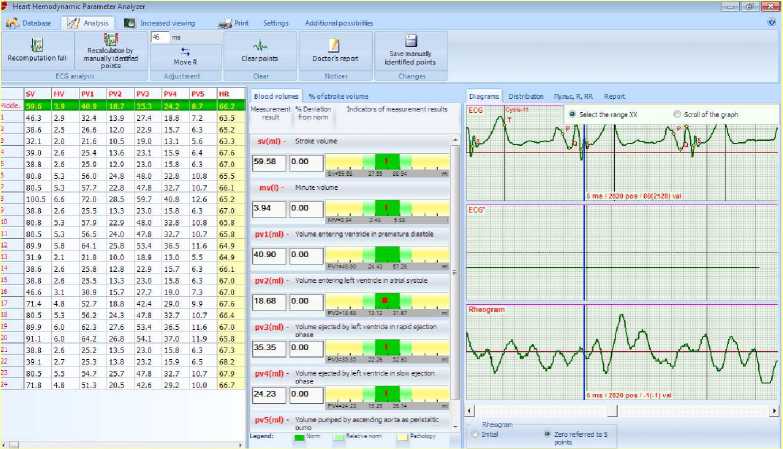
Figure 1b . The values of the phase blood volumes at the time preceding the acupuncture needle insertion. MV = 3,94 l/min; SV=59,6 ml/min; HR=66,2 BPM.
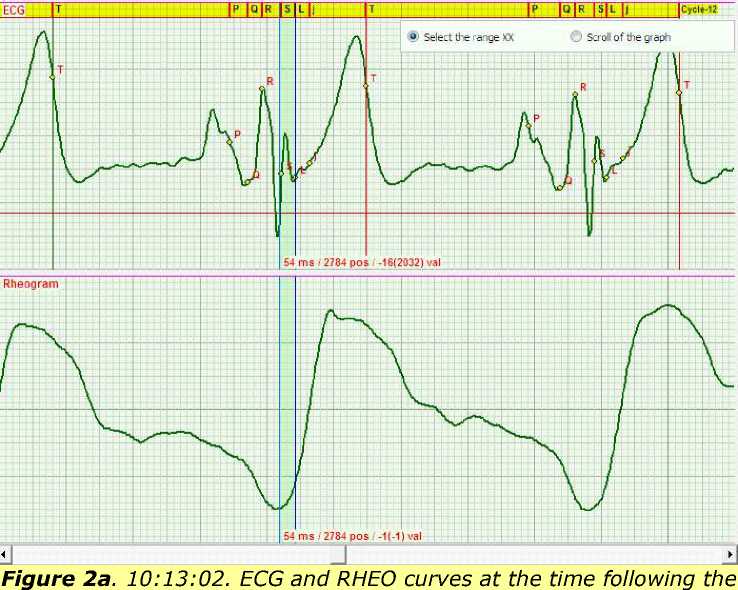
acupuncture needle insertion, the patient lying flat with the chest down.
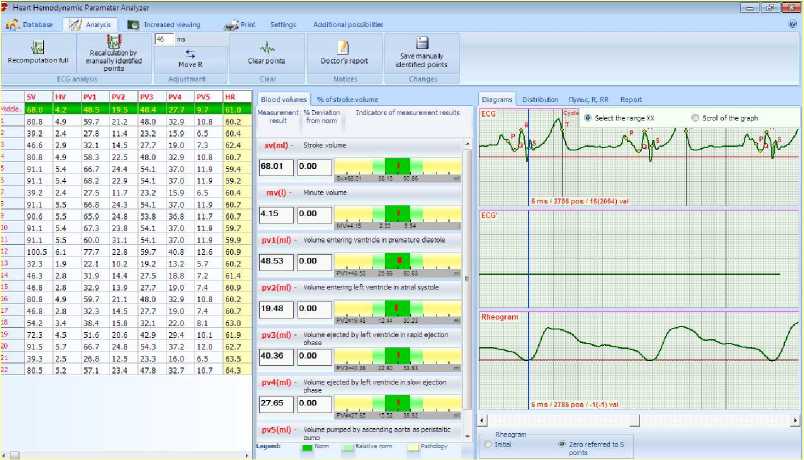
Figure 2b . The values of the phase blood volumes at the time following the acupuncture needle insertion, the patient lying flat with the chest down. MV = 4,15 l/min; SV=68,8 ml/min; HR=61,0 BPM.
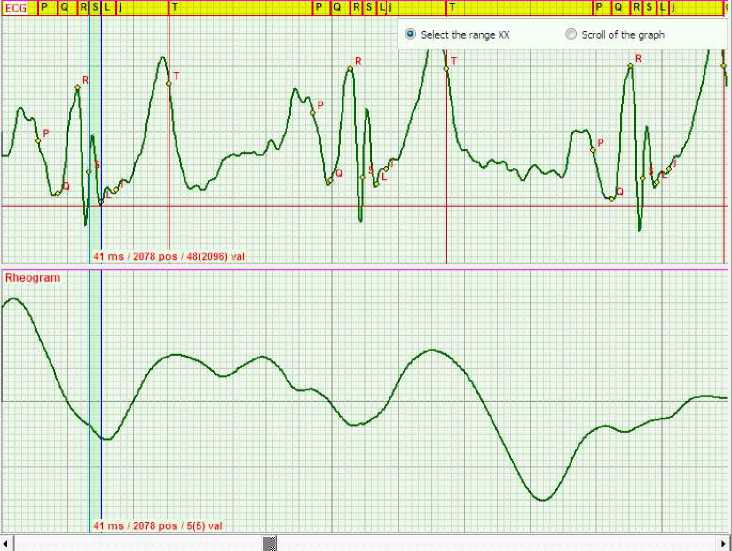
Figure 3a . 10:37:08. ECG and RHEO curves at the time of the acupuncture session.
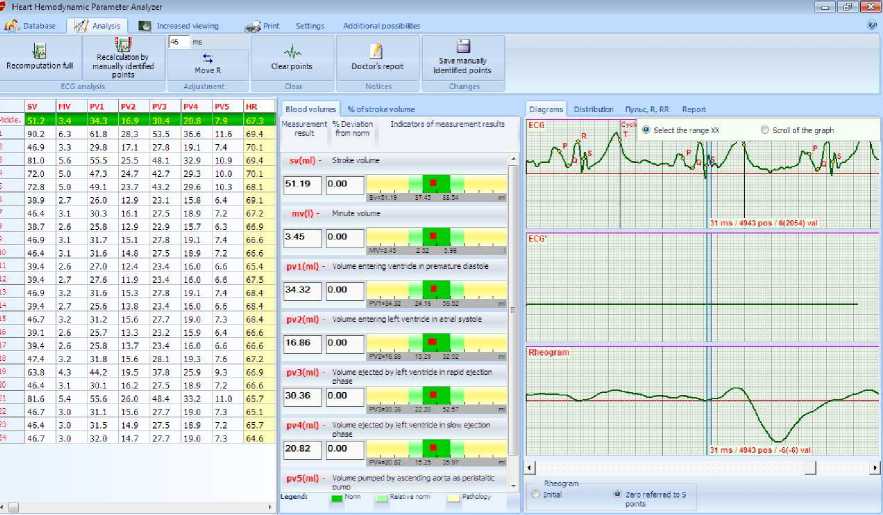
Figure 3b . The values of the phase blood volumes recorded during the acupuncture session. MV = 3,45 l/min; SV=51,2 ml/min; HR=67,3 BPM.
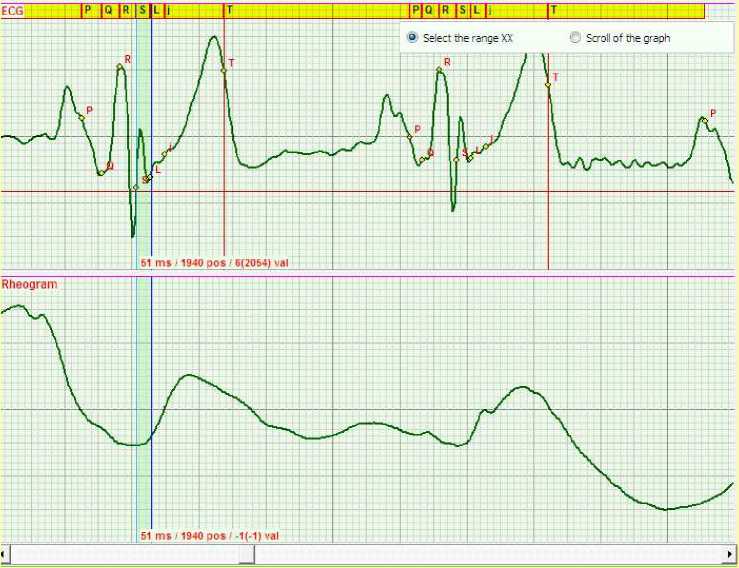
without needle insertion.
Figure 4a . 10:45:03. ECG and RHEO after the acupuncture session,
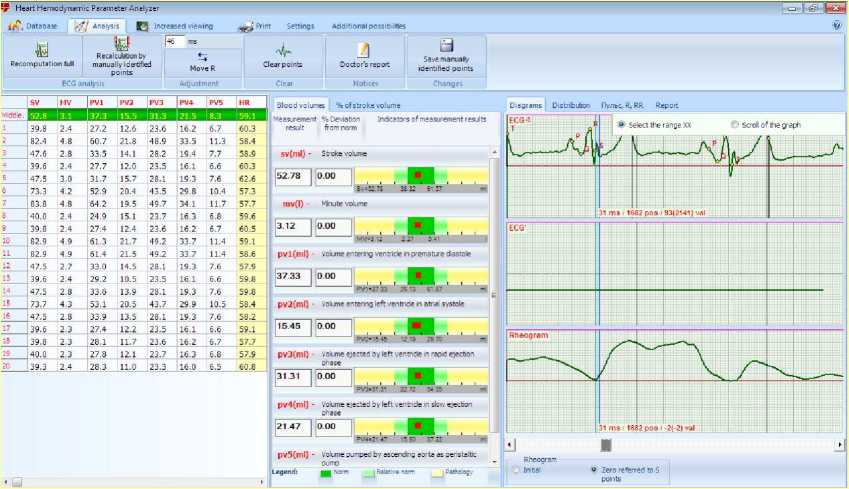
Figure 4b . The values of the phase blood volumes after the acupuncture session, without needle insertion. MV = 3,12 l/min; SV=52,8 ml/min; HR=59,1 BPM.
Patient 2. Elderly female
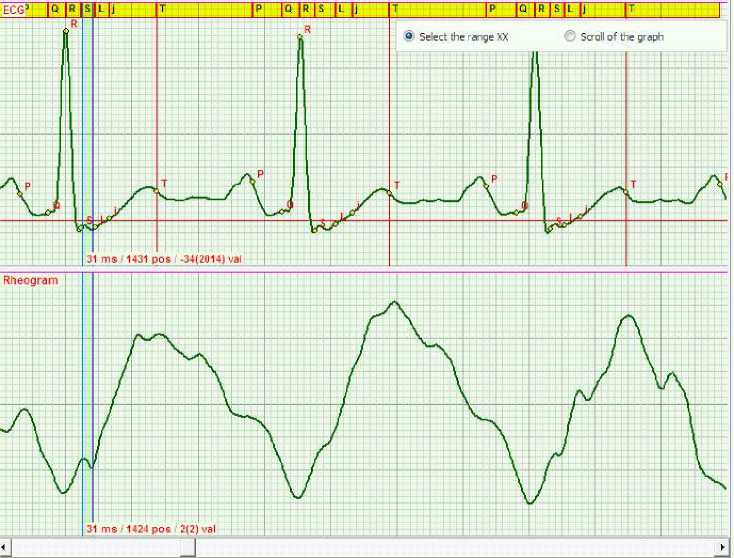
Figure 5a . 10:01:55. ECG and RHEO recorded on the first day preceding the acupuncture session, the patient lying flat on the back.
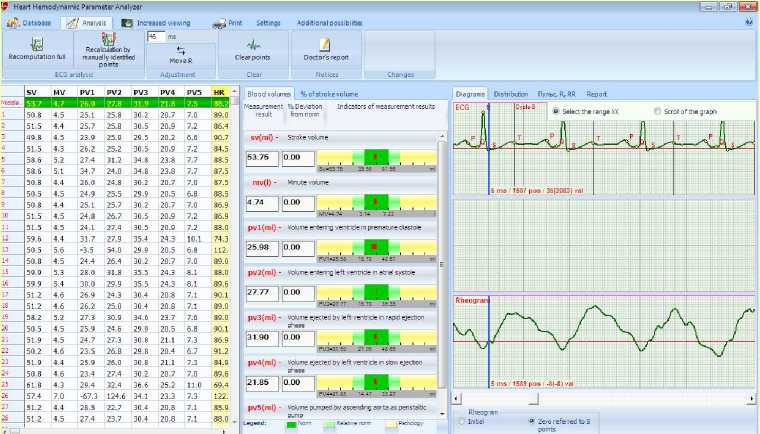
Figure 5b . The values of the phase blood volumes recorded on the first day preceding the acupuncture session, the patient lying flat on the back.
MV = 4,74 l/min; SV=53,7 ml/min; HR=88,2 BPM.
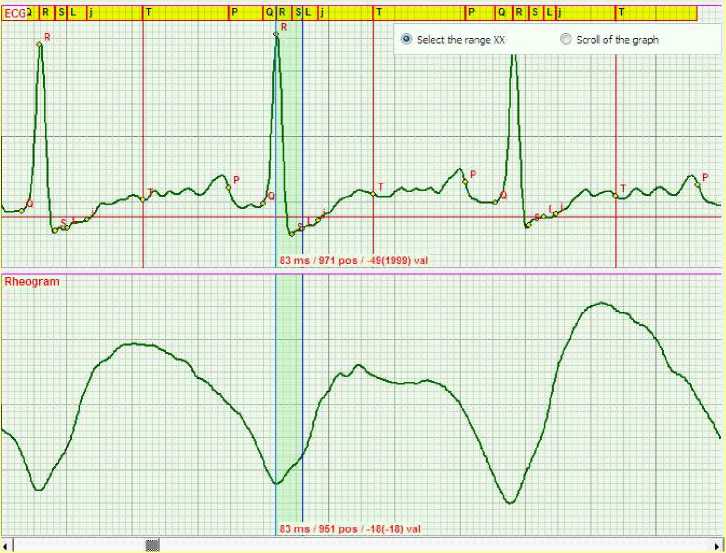
Figure 6a . 10:14:35. ECG and RHEO recorded on the first day after the needle insertion, the patient lying flat with the chest down.
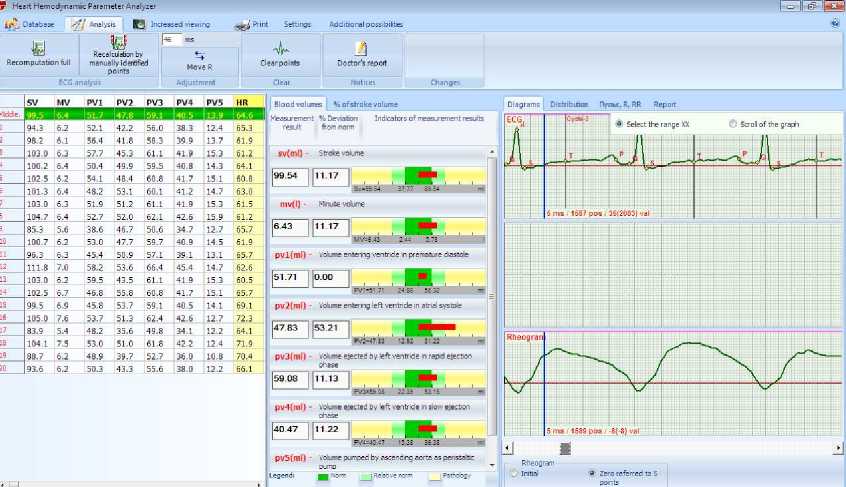
Figure 6b. The values of the phase blood volumes on the first day after the needle insertion, the patient lying flat with the chest down.
MV = 6,37 l/min; SV=99,5 ml/min; HR=64,6 BPM.
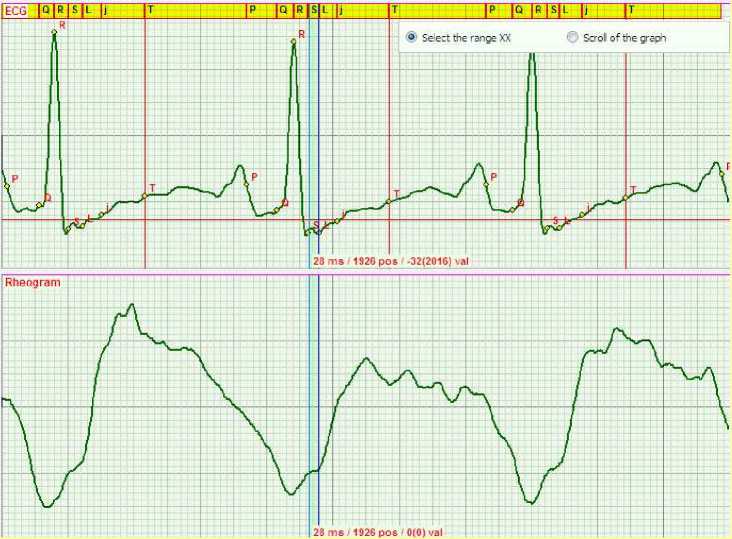
Figure 7a . 10:31:38. ECG and RHEO recorded on the first day of the acupuncture procedure.
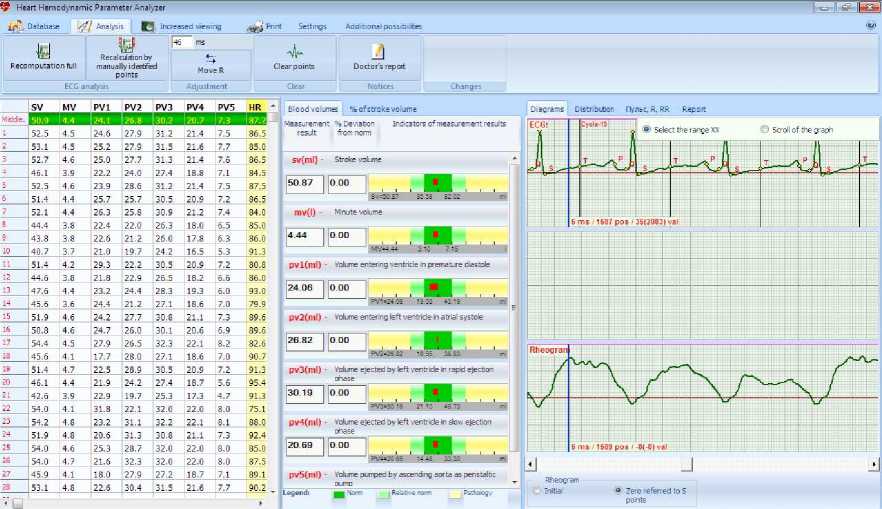
Figure 7b . The values of the phase blood volumes on the first day of the acupuncture procedure. MV = 4,44 l/min; SV=50,9 ml/min; HR=87,2 BPM.
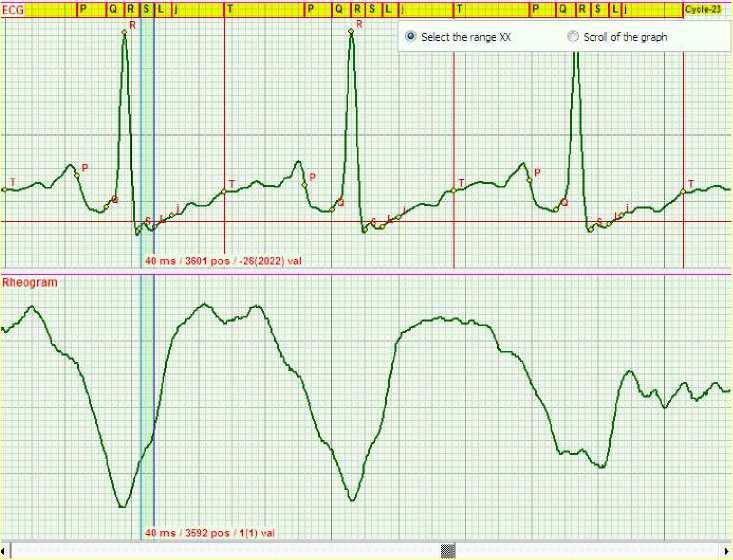
Figure 8a . 10:53:31. ECG and RHEO recorded on the first day after the acupuncture procedure, without needle insertion.
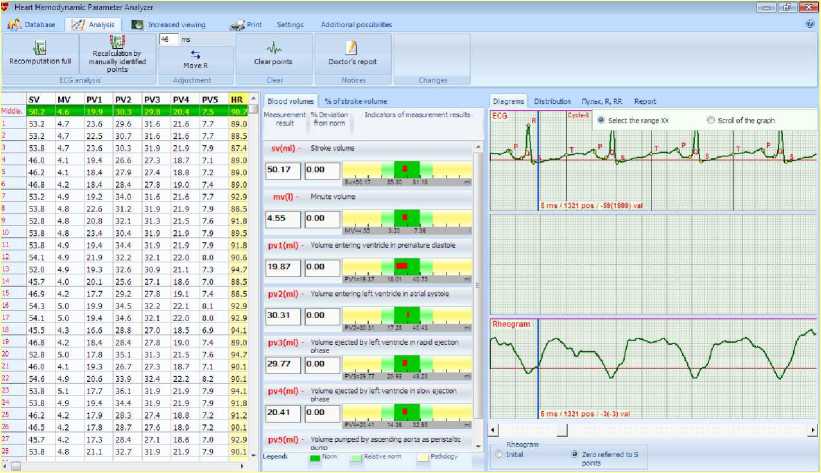
Figure 8b . The values of the phase blood volumes recorded on the first day after the acupuncture procedure, without needle insertion.
MV = 4,55 l/min; SV=50,2 ml/min; HR=90,7 BPM.
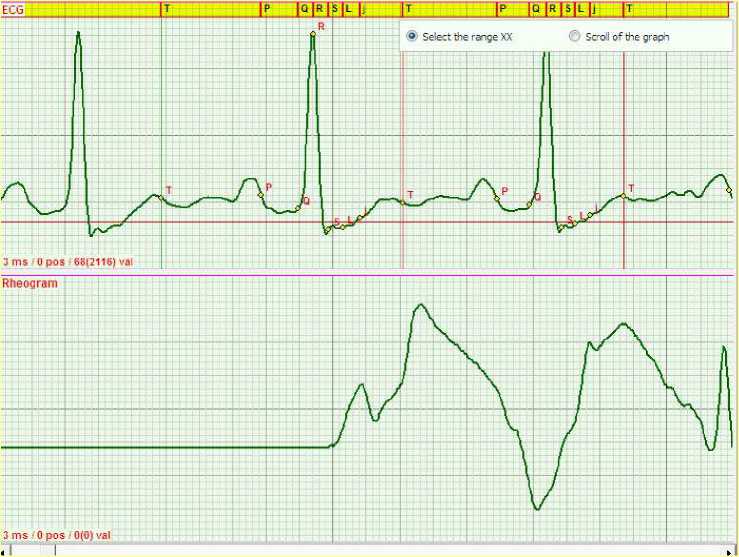
Figure 9a . 10:12:37. ECG and RHEO recorded on the second day before the acupuncture session, the patient lying flat on the back, without needle insertion.
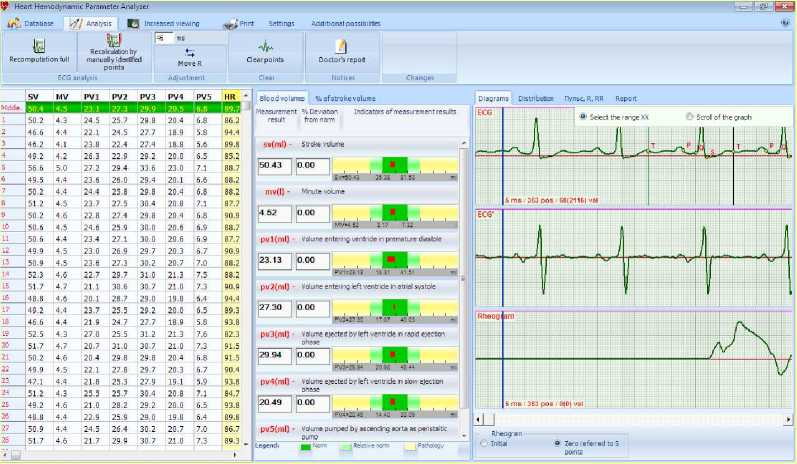
Figure 9b . The values of the phase blood volumes recorded on the second day before the acupuncture session, the patient lying flat on the back, without needle insertion. MV = 4,52 l/min; SV=50,4 ml/min; HR=89,7 BPM.
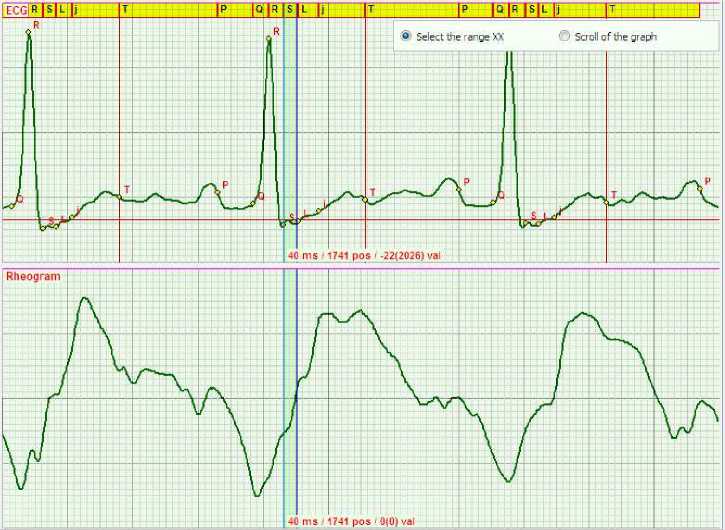
Figure 10a . 10:15:54. ECG and RHEO recorded on the second day after the acupuncture session, the patient lying flat with the chest down.
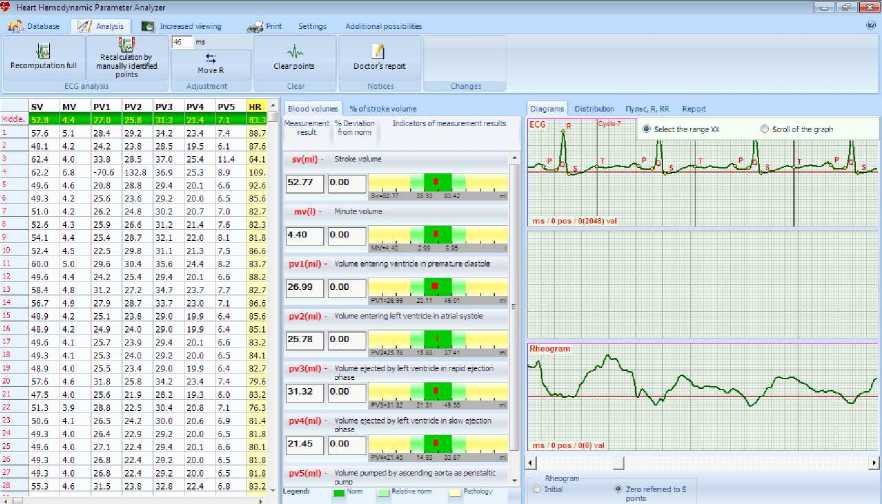
Figure 10b . The values of the phase blood volumes recorded on the second day after the acupuncture session, the patient lying flat with the chest down.
MV = 4,40 l/min; SV=57,8 ml/min; HR=83,3 BPM.
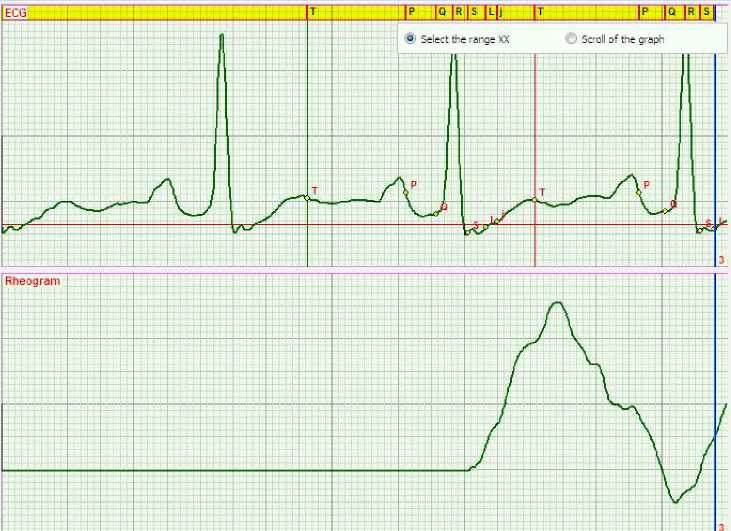
Figure 11a . 10:27:41. ECG and RHEO recorded on the second day during the acupuncture, the patient lying flat with the chest down, during sleep.
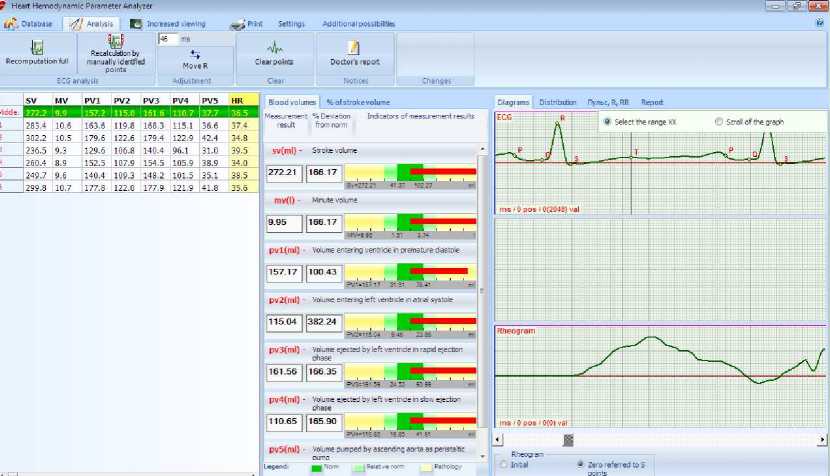
Figure 11b . The values of the phase blood volumes recorded on the second day during the acupuncture, the patient lying flat with the chest down, during sleep.
MV = 9,95 l/min; SV=272,2 ml/min; HR=36,5 BPM.
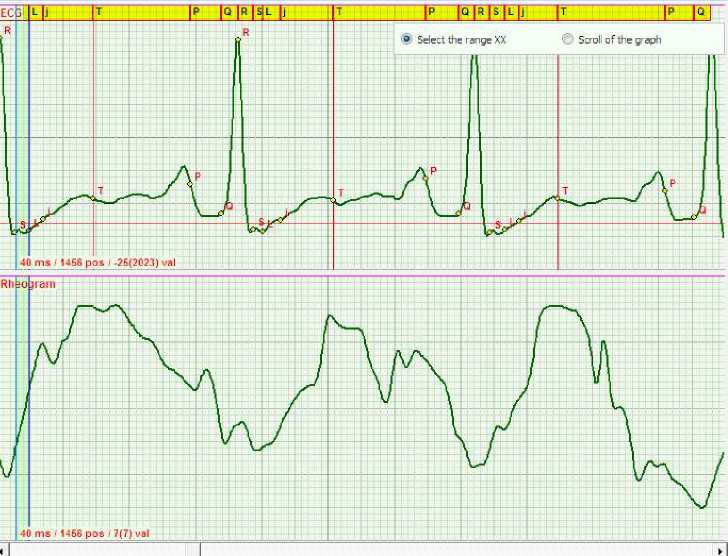
Figure 12a . 10:42:37. ECG and RHEO recorded on the second day after the acupuncture session, without needle insertion.
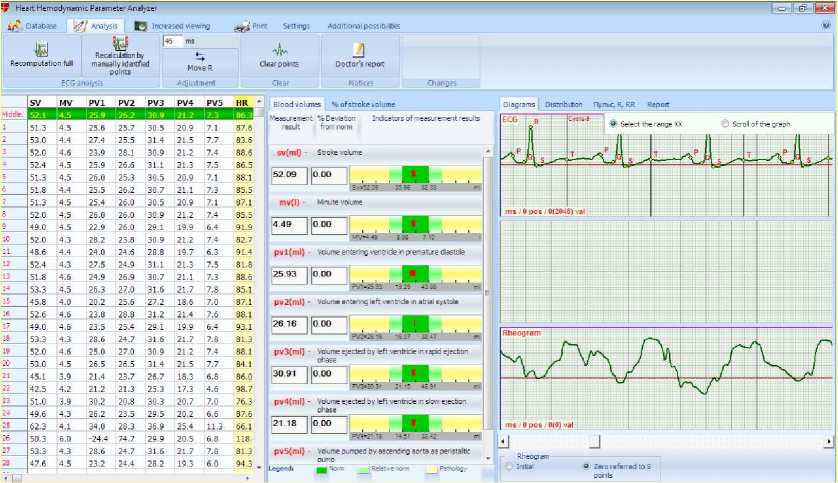
Figure 12b . The values of the phase blood volumes recorded on the second day after the acupuncture session, without needle insertion.
MV = 4,49 l/min; SV=52,1 ml/min; HR=86,3 BPM.
Patient 3. Male, a former sportsman
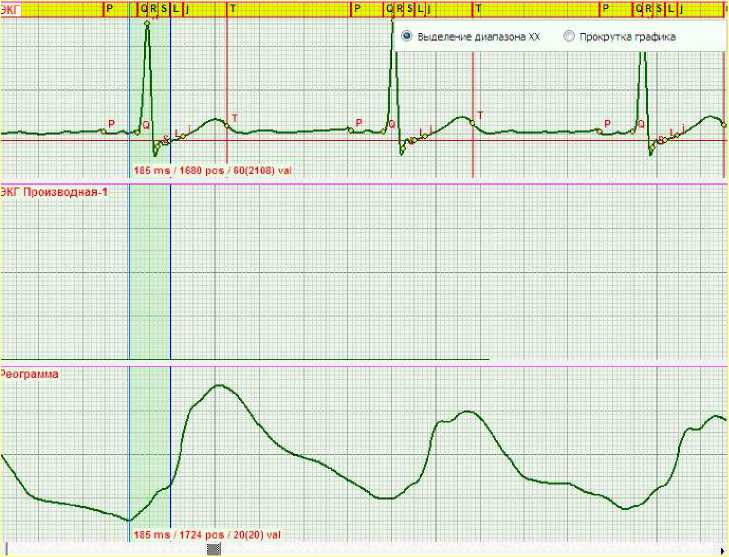
Figure 13a . 11:11:48. ECG and RHEO curves at the time preceding the acupuncture needle insertion.
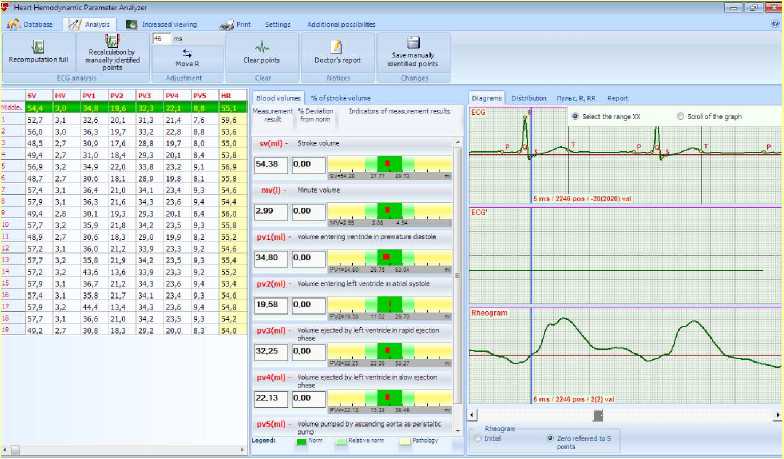
Figure 13b . The values of the phase blood volumes recorded at the time preceding the acupuncture needle insertion.
MV = 2,99 l/min; SV=54,4 ml/min; HR=55,1 BPM.
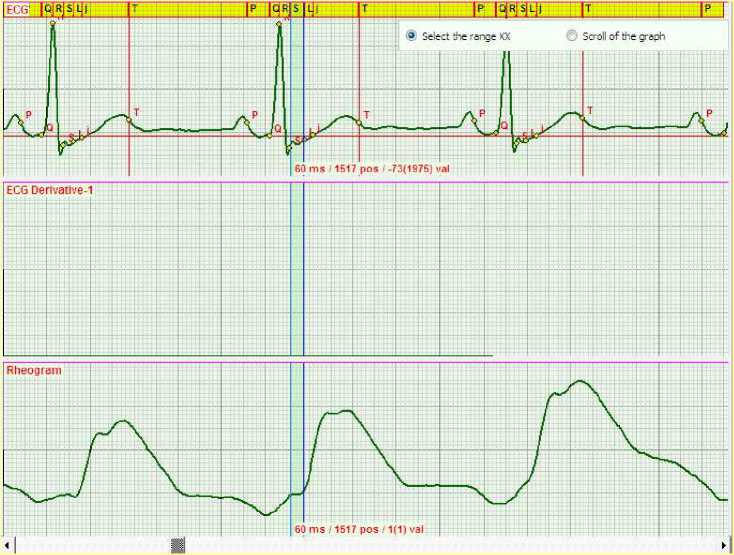
Figure 14a . 11:17:16. ECG and RHEO recorded at the time preceding the acupuncture needle insertion.
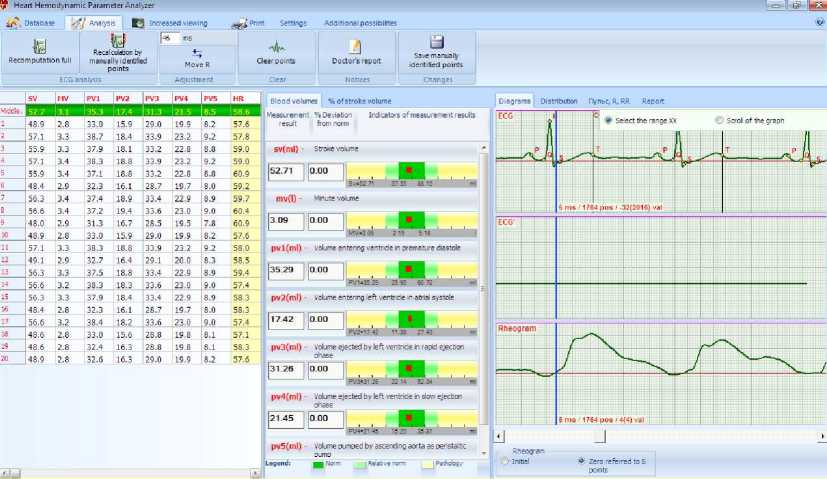
Figure 14b . The values of the phase blood volumes recorded at the time preceding the acupuncture needle insertion.
MV = 3,09 l/min; SV=52,7 ml/min; HR=58,6 BPM.
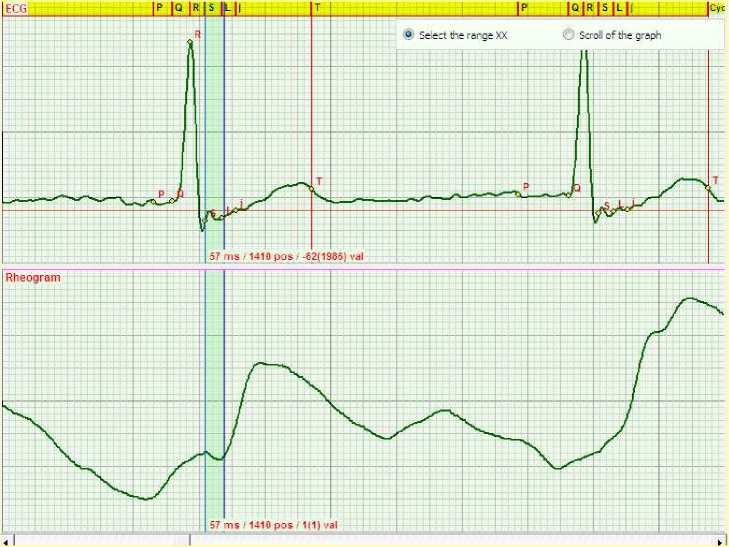
Figure 15a . 11:30:18. ECG and RHEO recorded after the acupuncture needle insertion.
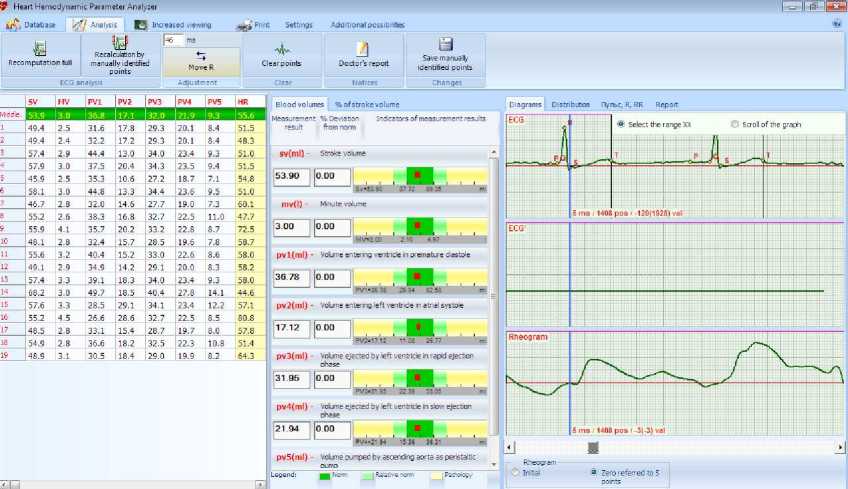
Figure 15b . The values of the phase blood volumes recorded after the acupuncture needle insertion.
MV = 3,00 l/min; SV=53,9 ml/min; HR=55,6 BPM.
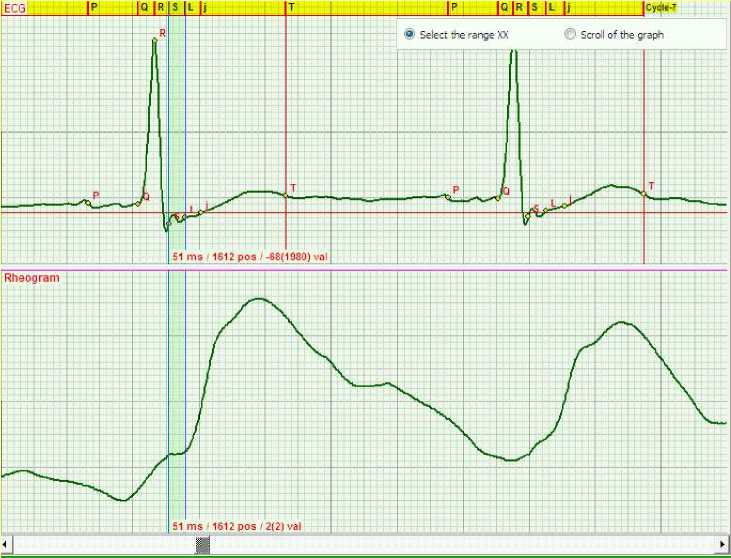
Figure 16a . 11:56:08. ECG and RHEO recorded at the time of sleep, the needles being inserted
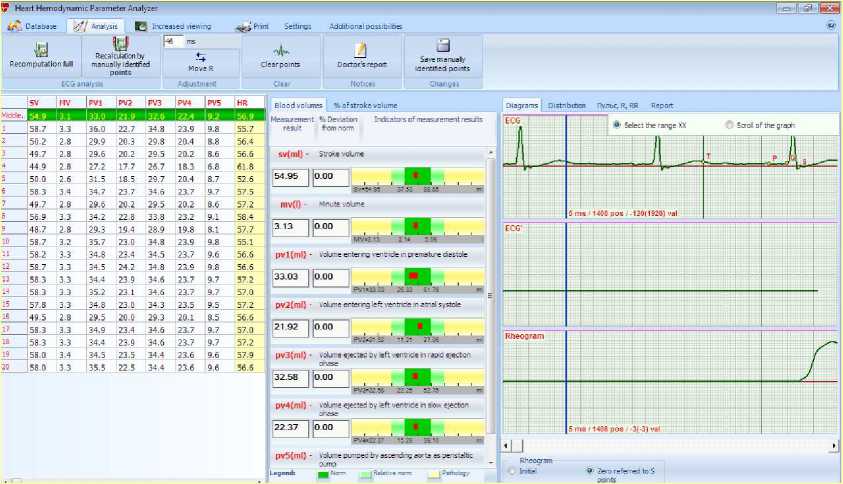
Figure 16b . The values of the phase blood volumes recorded at the time of sleep, the needles being inserted.
MV = 3,10 l/min; SV=54,9 ml/мmin; HR=56,9 BPM.
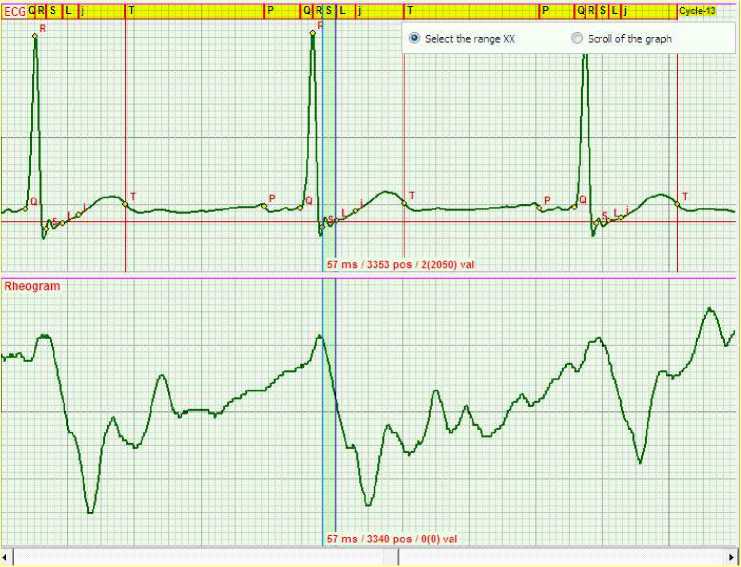
Figure 17a . 12:01:58. ECG and RHEO recorded after the acupuncture session, no needles being inserted.
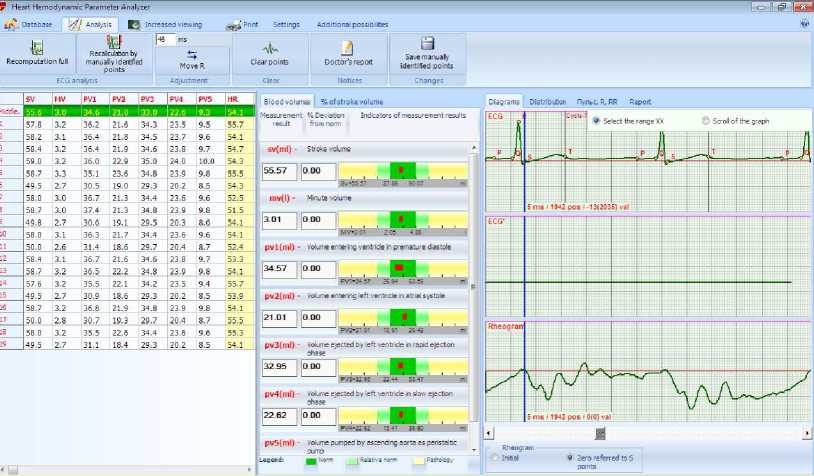
Figure 17b . The values of the phase blood volumes recorded after the acupuncture session, no needles being inserted.
MV = 3,01 l/min; SV=55,6 ml/min; HR=54,1 BPM.
Discussion and conclusions
Patient 1.
Video 1 is offered.
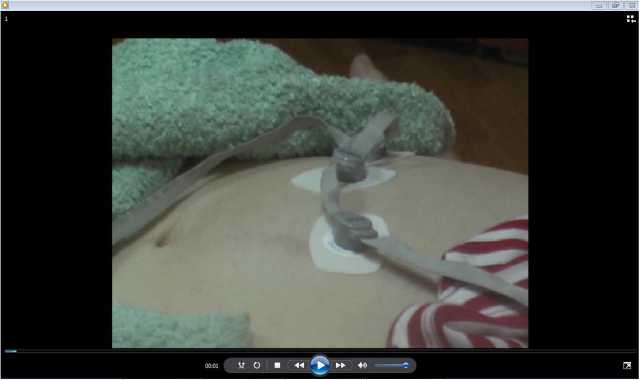
See on Youtube:
The data of the examination are given in Fig.1 – 4. According to the values of the heart cycle phase analysis, the female patient has a weak heart. Large amplitude of wave T and wave P are indicative of the problem. The amplitude of wave T increases if it is necessary to reduce the resistance load upon the heart. Thus, the compensation mechanism works. Then the kinetic energy of the stroke blood volume can transport it to the periphery. Wave P is also indicative of the weak heart. The problem can occur when the heart during the early diastole phase does not fill the ventricles with the necessary blood volumes. The amplitude of the phase of myocardium tension S – L is large as well, and is considered as the compensation mechanism. When the muscles of the interventricular septum and the myocardium lack the necessary contraction function, the tension of the muscles increases. Thus, the necessary pressure for the opening of the heart valve to aorta is created. The small amplitudes of the R deflection and S deflection indicate the weakness of the heart.
The coronary flow is within the norm, thus indicating the decay of the RHEO in phase T – U. No characteristics indicating the possibility of sudden cardiac death are traced.
The phase of rapid ejection of the RHEO in Fig.1a is very short. It is followed by the blood pressure fall. Herewith the diastolic volume PV1=40,9 ml/min and PV2=18,7 ml/min (s. Fig1b). After the needle insertion the volumes increase to PV1=48,5 ml/min and PV2=19,5 ml/min respectively (s.Fig2b). Herewith the RHEO form is within the norm. Thus, the contraction function of the heart increases under the influence of the needle insertion.
After the acupuncture session the diastolic values are as follows: PV1=37,3 ml/min and PV2=15,5 ml/min (s. Fig.4b). The stroke volume decreased from SV=59,6 ml/min at the beginning of the experiment to SV=52,8 ml/min. The minute volume MV=3,1 l/min decreased compared to MV=3,9 l/min. The pumping function of the aorta PV5 decreased from 8,7 ml/min to 8,2 ml/min. The values indicate load decrease on all heart segments. Increasing amplitudes R and S also show the improvement of the heart functioning. Increase of the R wave and S wave amplitudes remains unchanged as well as the decrease of the T wave and P wave amplitudes.
After the acupuncture session the patient’s subjective feeling improved.
Patient 2.
Video 2 is offered.
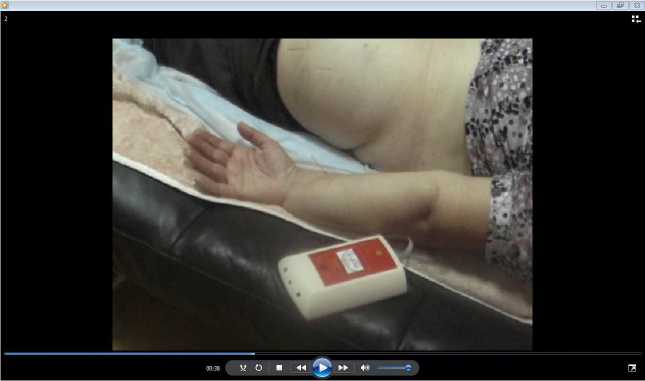
See on Youtube:
The examination information is presented in Fig.5 – Fig.12. Concerning this case it should be mentioned that on the first day the hemodynamic response to the needle insertion was observed. Thus, after the needle insertion the MV increased from 4,7 l/min to 6,4 l/min. At the same time the hemodynamic parameters went beyond the norm (s. Fig.6b). PV2 went beyond the norm by 53,21% compared to 11% shown by the other parameters. However, the same reaction was not observed during the following day. It should be mentioned that during the first day wave T was recorded on the ECG curve at the initial phase but it was not generated when the patient was lying flat with the chest down. During the second day wave T was constantly observed on the ECG curve. The hemodynamic parameters showed no significant changes. Thus, the first acupuncture session contributed to stability of the cardiovascular system.
The representative result of the examination was the recording of the hemodynamic parameters during the short-period sleep caused by relaxation after the needle insertion session (s. Fig.11). MV increased to 9,9 l/min compared to 4,7 l/min. The pulse rate decreased to 36 BPM compared to 88 BPM. After the short-period sleep the patient recovered quite soon. After the needle insertion the values were as follows: MV=4,5 l/min, HR= 86 BPM.
After the second day of the treatment the patient’s subjective feeling improved and she no longer needed help while walking.
Patient 3 (a former sportsman)
Video 3 is offered.
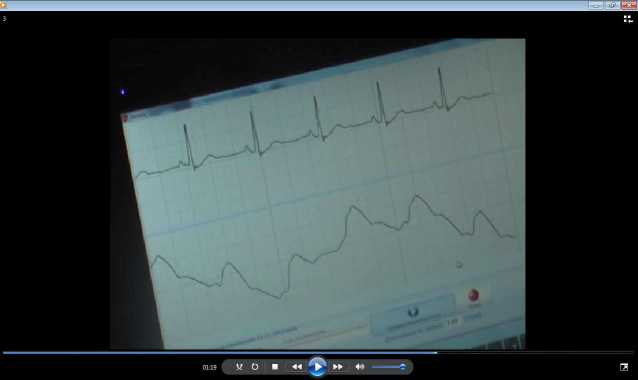
See on Youtube:
The course of examination is presented in Fig.13 – Fig.17.
Let us consider the input data. Fig.1 illustrates that wave P was not recorded on the ECG at the time preceding the needle insertion. At the same time it should be noted that arterial pressure increase starts early at point Q. Blood pressure increase corresponding to the norm is recorded at the phase of rapid ejection. The minute blood volume MV=3,0 l/min; the stroke volume SV=54,4 ml/min; the heart rate HR=55,1 BPM. After the needle insertion, a blood pressure increase on the RHEO could be observed starting in point Q on the ECG. In fact, the blood pressure increase recorded on the RHEO is minimum. No increase of blood pressure in the phase of rapid ejection is observed. As a rule it is caused by the blockers. This fact was proved after the acupuncture session. The specifics of the RHEO curve after the acupuncture session similar to that observed in Patient 1 before the session should be noted.
Despite all the procedures performed during the needle insertion the patient’s hemodynamic parameters were within the norm.
The results show that even slight changes in the cardiovascular system can be traced with the method of the cardiac cycle phase analysis due to its high sensitivity.
Author contributions
All authors contributed equally to this work. V.N.S. read and met the ICMJE criteria for authorship. All authors read and approved the final manuscript.
Conflict of interest
None declared.
Statement on ethical issues
Research involving people and/or animals is in full compliance with current national and international ethical standards.

